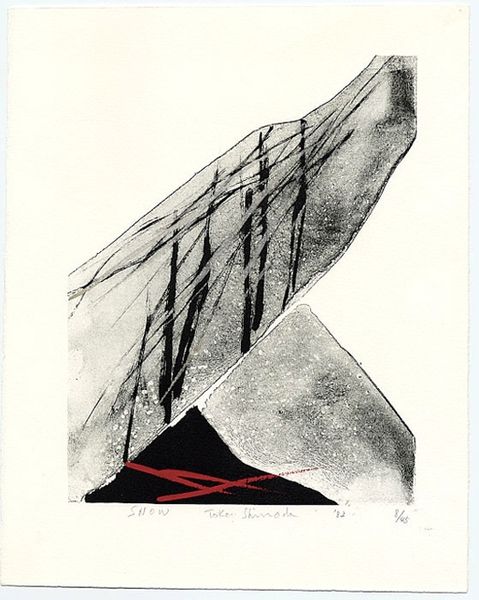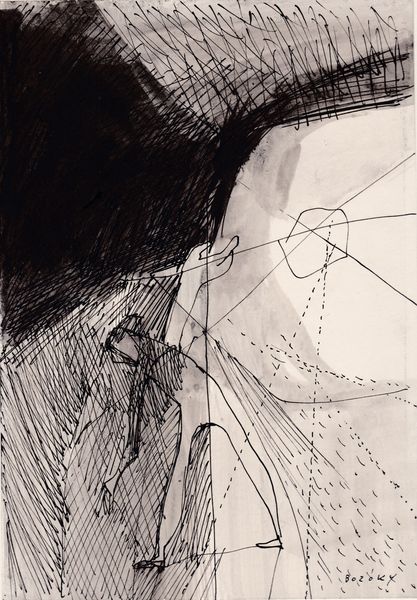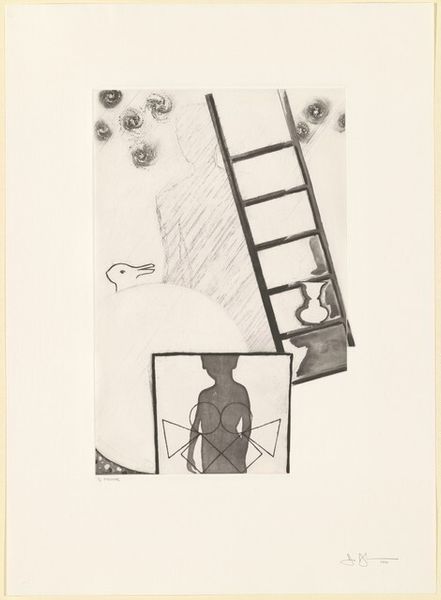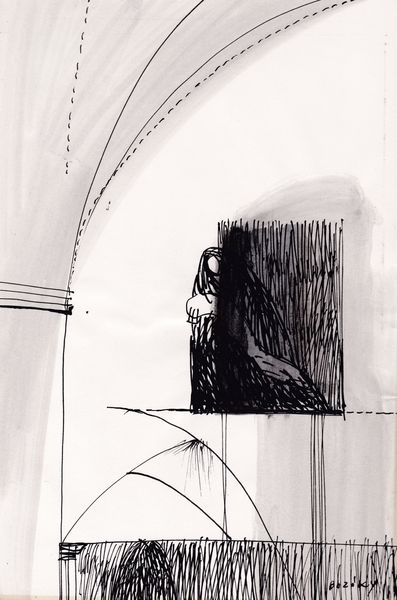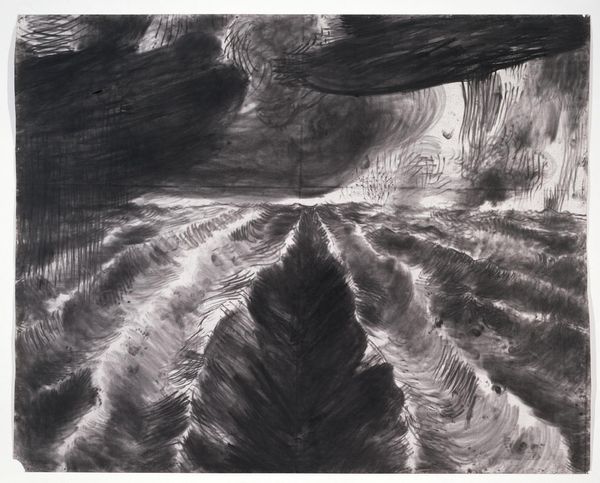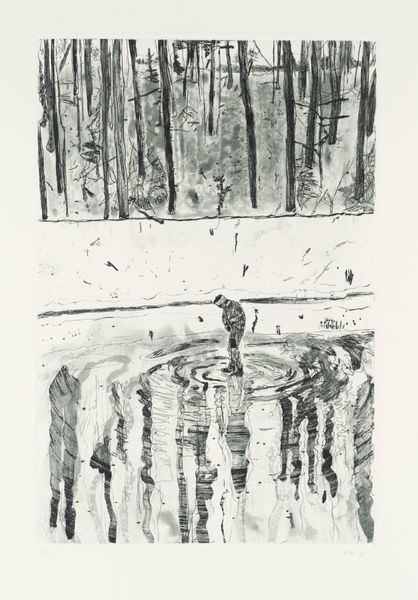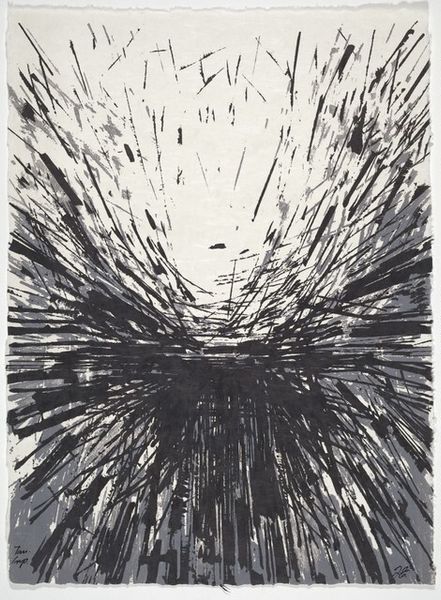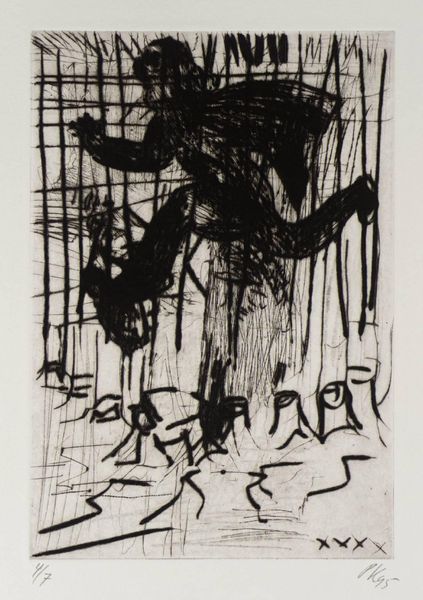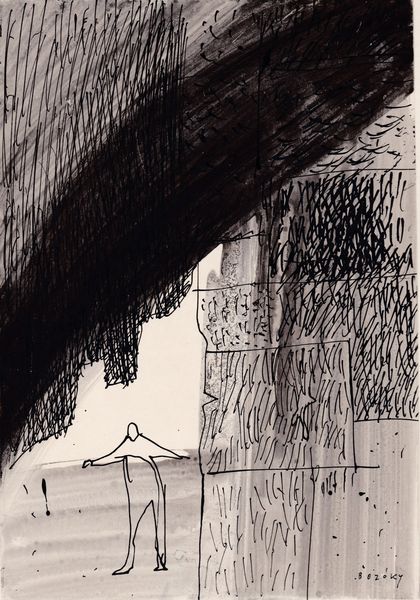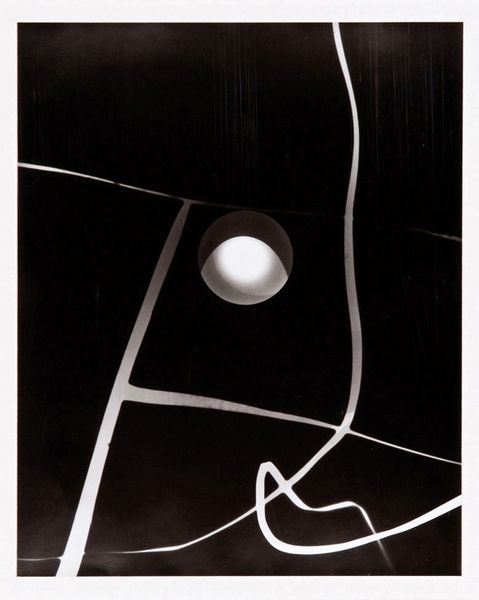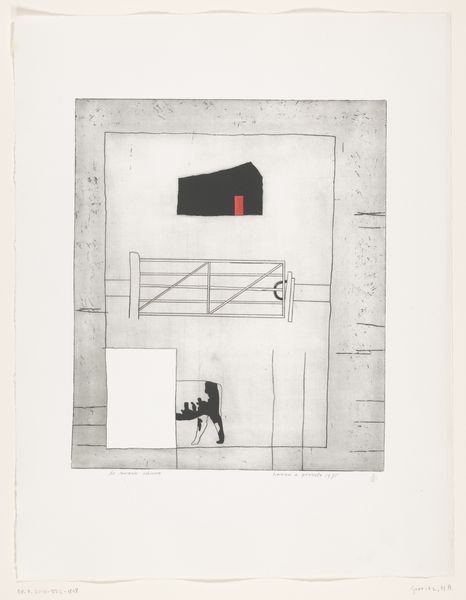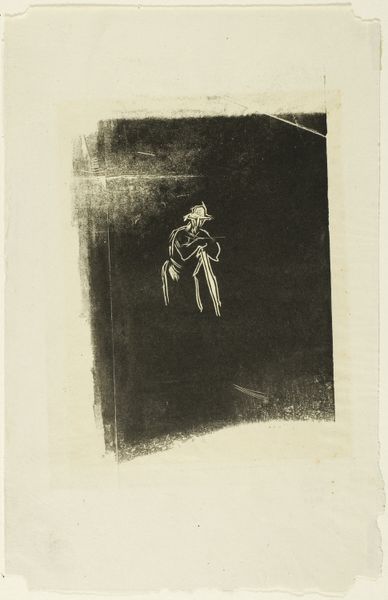
Dimensions: support: 297 x 208 mm frame: 362 x 275 x 38 mm
Copyright: © David Shrigley | CC-BY-NC-ND 4.0 DEED, Photo: Tate
Curator: David Shrigley's ink drawing presents a stark scene: a figure sits on a chair, seemingly at the top of layered platforms, with a dark void above and a snake below. It's titled simply, "Untitled." Editor: It feels incredibly ominous. The high contrast and the figure dwarfed by the darkness create a sense of impending doom, despite the almost childlike simplicity of the drawing. Curator: Shrigley often employs childlike simplicity to disarm his viewers. Snakes often symbolize temptation or knowledge, and here it hints at a looming confrontation. The platforms the figure occupies, however, are a common symbol for higher status or consciousness. Editor: Right, but what kind of consciousness allows one to sit idly by while danger approaches? Is it about the paralysis of modern life, where we are aware of systemic issues but feel powerless to act? The snake could represent all manner of political evils. Curator: Perhaps. Or it's a comment on the individual's relationship to fate. "The time cometh," as the inscription reads. Editor: So, we're left waiting for something terrible to happen. A reflection of our times, I think.
Comments
Join the conversation
Join millions of artists and users on Artera today and experience the ultimate creative platform.
tate 6 months ago
⋮
This drawing shows a figure caught between a snake and a large area of darkness that appears to be descending to fill the page. Shrigley drew the figure sitting on a chair on a raised dais in the centre of the lower half of the paper. The dais is made up of five stepped levels. In the foreground a black snake approaches the figure, moving up the first two levels of the dais. Like the snake, the figure is a simplified solid black ink silhouette. By contrast, what can be seen of the line-drawn chair under the figure and the dais itself are realistic three-dimensional line drawings. The straight edges of the dais were drawn using a ruler and it is perspectivally accurate. Directly above the figure, Shrigley filled the entire upper half of the paper with black paint, applied unevenly with a brush, leaving visible brush strokes. The black paint, like a huge weight descending to swallow the figure on the dais, hovers just above his head, curving around the corners of the dais. On the ground in the foreground some scribbled black lines add to the tension between representation and abstraction created by the differing methods of drawing. At the bottom right of the paper, just beneath the scribble, the artist has written in capital letters the melodramatic faux-Biblical words: ‘the time cometh’.
